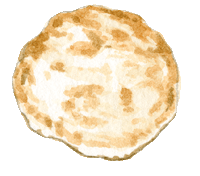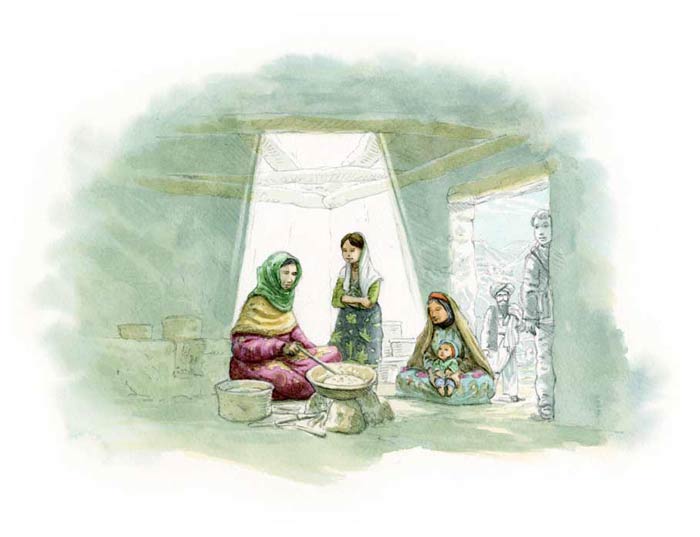Katlama

Form: Unknown
Country of origin: Afghanistan
What distinguishes it from other methods of bread making: Similar to Indian puri and has numerous relatives in surrounding countries. One of the breads made for holidays and religious days.
Category of bread: (7and 10) Similar to Indian puri and has numerous relatives in surrounding countries. One of the breads made for holidays and religious days.
Particularity: It goes together with the Festival of Sacrifice, where a sheep is sacrificed
Ingredients: Dough: Wheat flour; warm water; yogurt; salt. Topping: ground red hot pepper; chickpea flour; salt; coriander seeds; warm water

Afghanistan
In Afghanistan as elsewhere, the festivities – whether or not they are religious – imply enriching the day-to-day, and the first thing that marks the day-to-day existence of the Pashtun people is bread. On festive occasions, the dough is embellished with sweets – mixtures of milk, whey, butter, eggs, sugar, etc. – and dressed up like human beings do when they want to share some important event.
Katlama is therefore steadfastly related to the Aïd el-Kebir or “Greater Eid,” the Festival of Sacrifice, where a sheep is sacrificed. This takes place the last month of the Muslim calendar. It commemorates a sacrifice that didn’t in fact take place: God asked Abraham to sacrifice his only son -- Isaac, in Christian and Jewish tradition, Ishmael in Muslim tradition -- and Abraham submitted to the request. It is for this submission that Allah rewarded Abraham, through the intervention of the archangel Gabriel, when a sheep was sacrificed in Ishmael’s (Isaac's) stead. The sheep that the Muslims sacrifice is to commemorate Abraham’s act of allegiance to his God.
On this occasion, women rise early in the morning to prepare a griddlecake made of wheat flour, salt and warm water, covered with chickpea flour spiced with ground red hot pepper, coriander seeds and salt, and then fried. Katlama is therefore distributed to everyone, and accompanies every meal from morning until the last prayer at night: the visits one makes, the prayers one recites, the forgiveness one asks from those one has offended or hurt during the course of the past year, the wishes one expresses. In the afternoon, the women settle in around the tombs in the cemetery and give homage to the dead. They share an improvised meal, which of course includes katlama; they offer some to the musicians who followed them amongst the deceased now in the ground, with their faces turned towards the Mecca.

